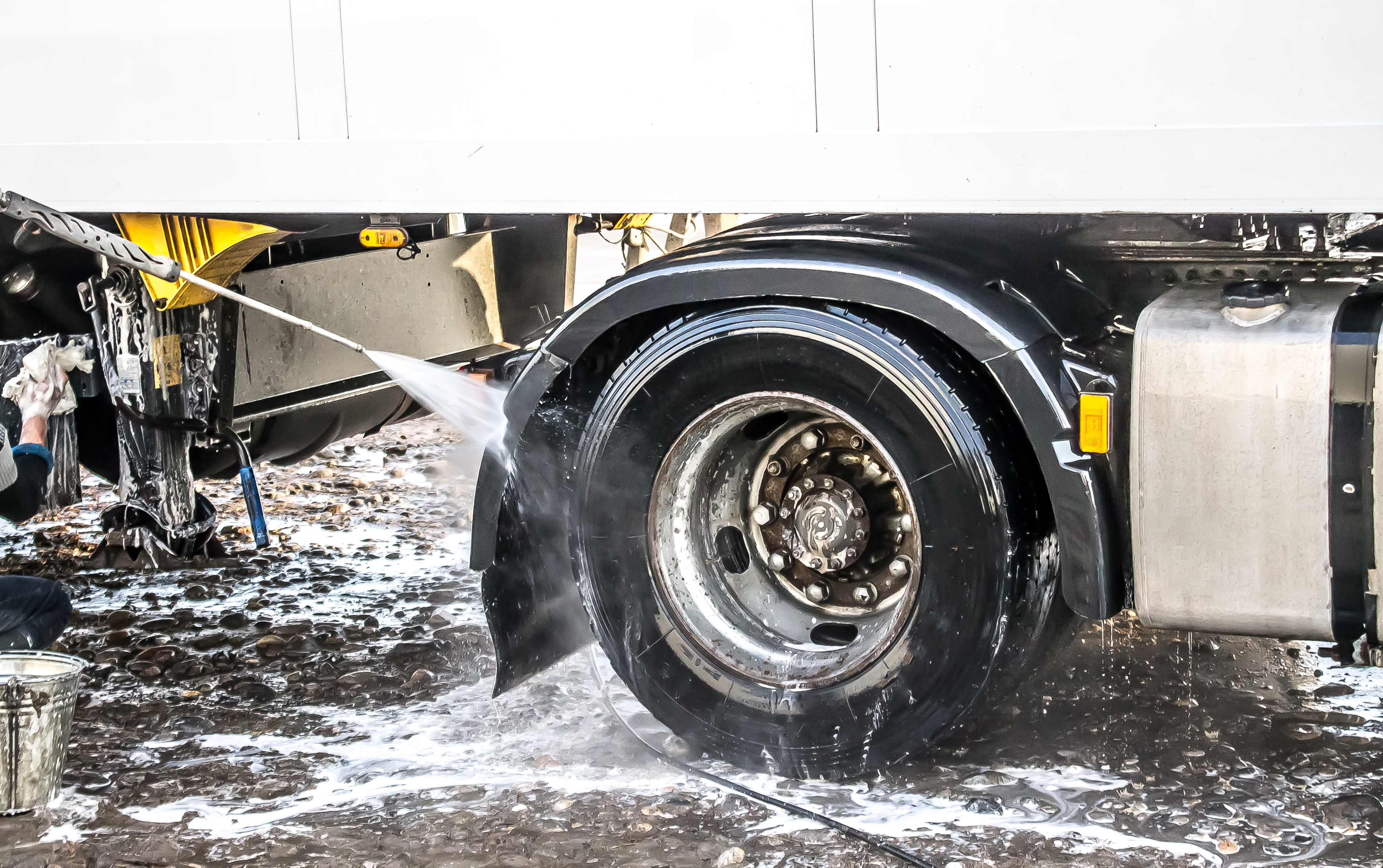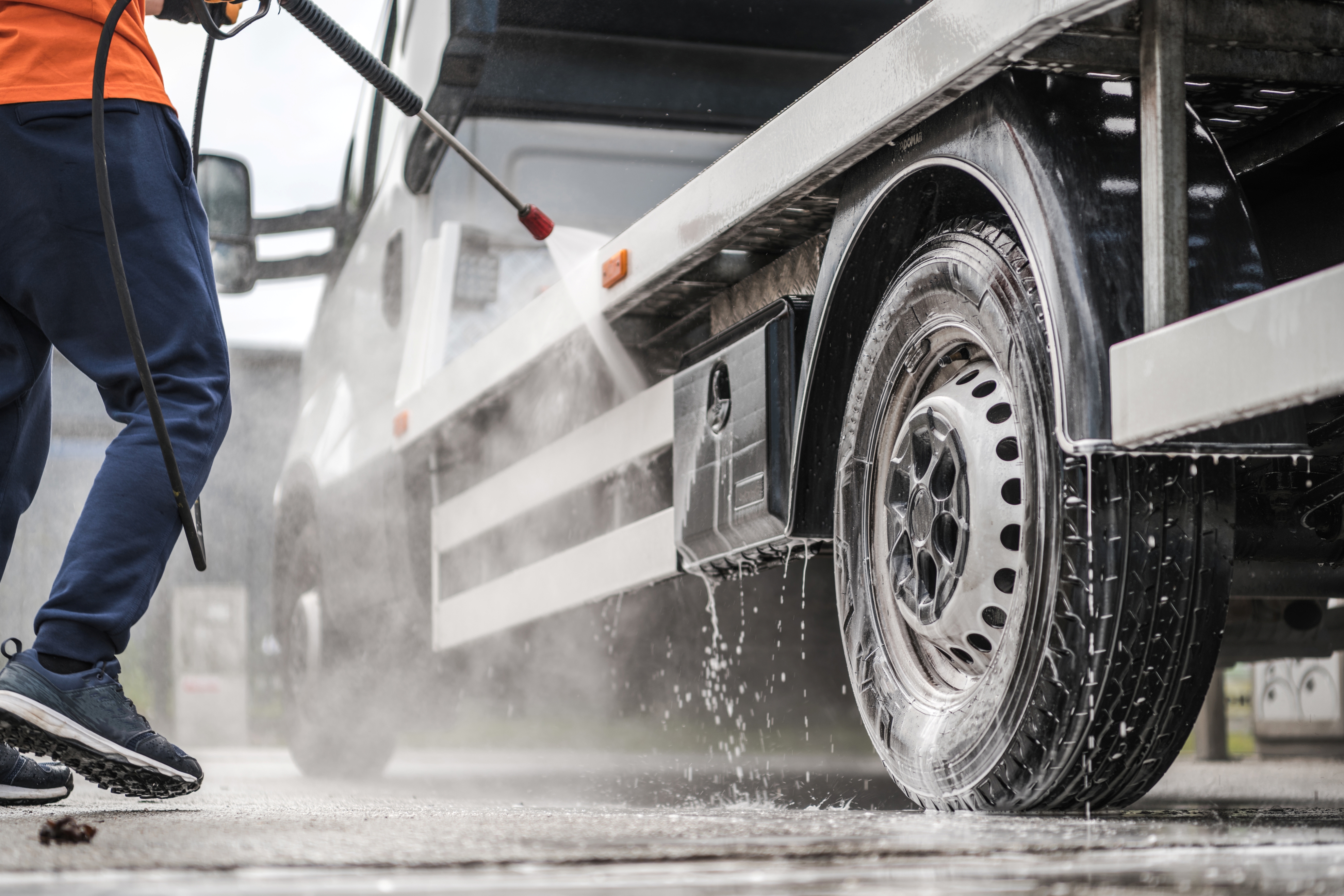
Miranda Blake
Jak najít myčku nákladních vozidel ve vašem okolí
Vytvořeno: 23.10.2024
•
Aktualizováno: 01.11.2024
Ať už převážíte náklad přes mezinárodní hranice, nebo spravujete flotilu těžkých nákladních vozidel, zajištění důkladného čištění a dobré údržby vašich vozidel může mít významný vliv na jejich výkon, životnost a celkovou efektivitu provozu. Naštěstí je snadné najít spolehlivou a pohodlnou myčku nákladních vozidel ve vašem okolí - přečtěte si, jak na to.
Co obnáší mytí nákladních vozidel?
Pokud jde o čištění vozidel, nákladní vozidla vyžadují specializované zařízení a vybavení, které splňuje jejich jedinečné požadavky.
Poloha a dostupnost
Myčky nákladních vozidel jsou strategicky rozmístěny podél hlavních dálnic a sjezdů z mezistátních silnic, což zajišťuje snadný přístup a minimální narušení provozu těžkých nákladních vozidel. Toto umístění umožňuje řidičům dálkové dopravy rychle a pohodlně se dostat k potřebným mycím službám, aniž by museli řešit problémy s navigací v přeplněných městských ulicích.
Požadavky na vybavení a zařízení
Protože nákladní vozidla vyžadují robustnější a výkonnější stroje, aby se vypořádala se špínou, nečistotami a zbytky silnic, které se hromadí na jejich rozlehlých površích, mycí služby obvykle nabízejí větší prostory, větší odstupy a speciální vybavení - včetně vysokotlakých myček a kartáčů s velkým dosahem.
Spotřeba zdrojů a náklady
Mytí nákladních vozidel obecně vyžaduje více vody a elektřiny vzhledem k jejich velikosti a objemu a také potřebu intenzivnějších čisticích postupů. Taková zvýšená spotřeba zdrojů se promítá do vyšších provozních nákladů, které se pak odrážejí v ceně.
Nabídka služeb a specializace
Myčky nákladních vozidel se obvykle zaměřují na komplexní čištění exteriéru, včetně specializovaných služeb, jako je odmašťování motoru a mytí blatníků, aby řešily jedinečné potřeby a problémy spojené s udržováním čistoty těžkých užitkových vozidel.

Navigace v prostředí myček nákladních vozidel pomocí SNAPu
Najít vhodné zařízení pro vaše potřeby může být náročný úkol. V tomto případě vstupuje do hry společnost SNAP, poskytovatel integrovaných služeb pro silniční dopravu, aby vám usnadnila cestu.
Rozsáhlá síť mycích linek pro nákladní automobily
Naše síť se rozprostírá po celé Evropě a má více než 230 poboček, které jsou určeny speciálně pro potřeby provozovatelů užitkových vozidel. Ta jsou strategicky rozmístěna podél hlavních dálnic a dopravních uzlů, což řidičům zajišťuje snadný přístup k potřebným čisticím službám, aniž by to narušilo jejich rozvrh nebo trasy.
Podívejte se na naši mapu SNAP a zjistěte, jak najít zařízení ve vašem okolí.
Bezproblémová integrace
Účet SNAP je integrován se sítí myček nákladních vozidel a umožňuje řidičům a provozovatelům vozových parků pohodlně platit za služby prostřednictvím jediného zabezpečeného účtu. Odpadá tak nutnost používat hotovost nebo více způsobů platby, což zjednodušuje mytí a poskytuje komplexní řešení pro správu výdajů vozového parku.
Řešení mytí nákladních vozidel na míru
Myčky nákladních vozidel společnosti SNAP jsou vybaveny veškerým správným vybavením a odbornými znalostmi, které umožňují důkladné a efektivní mytí od vysokotlakého mytí exteriéru až po specializované mytí podvozku a odmašťování motoru.
Bezpečné a přístupné parkování v depu
Kromě služeb mytí nákladních vozidel poskytujeme také síť bezpečných a přístupných parkovišť Depot po celé Evropě. Tato vyhrazená parkoviště, exkluzivně pro držitele účtu SNAP, nabízejí vylepšené bezpečnostní prvky a pohodlí předběžné rezervace parkovacích míst prostřednictvím naší mobilní aplikace intruck. Řidiči tak mají jistotu, že jejich vozidla jsou v bezpečí a přístupná.
Optimalizovaná správa vozového parku pomocí systému SNAP
Integrací našeho kompletního balíčku služeb mohou provozovatelé vozových parků zefektivnit svůj provoz a dosáhnout vyšší efektivity. Od bezproblémového mytí nákladních vozidel a bezpečného parkování až po správu pohonných hmot a platby na přechodu Dartford - naše řešení umožňují manažerům vozových parků soustředit se na jejich hlavní obchodní cíle a zároveň maximálně využít možnosti technologií k optimalizaci jejich procesů.
Zvyšte výkonnost svého vozového parku pomocí systému SNAP
Udržování čistoty a dobrého stavu vašich užitkových vozidel je důležitým aspektem zajištění dokonalého provozu. Využitím rozsáhlé sítě specializovaných zařízení společnosti SNAP můžete zvýšit výkonnost a životnost svého vozového parku a zároveň zjednodušit celkové řízení přepravních operací.
Naše integrované služby poskytují komplexní řešení, které vyhovuje jedinečným potřebám průmyslu užitkových vozidel. Umožníme vám soustředit se na to, co je nejdůležitější - bezpečnou a efektivní přepravu nákladu, přičemž minimalizujeme potíže a maximalizujeme ziskovost podniku.
Až se vydáte na cestu, nechte společnost SNAP, aby se stala vaším spolehlivým partnerem pro zachování bezvadného stavu vašich vozidel. [Zaregistrujte se zdarma ještě dnes!] (https://snapacc.com/sign-up/)



